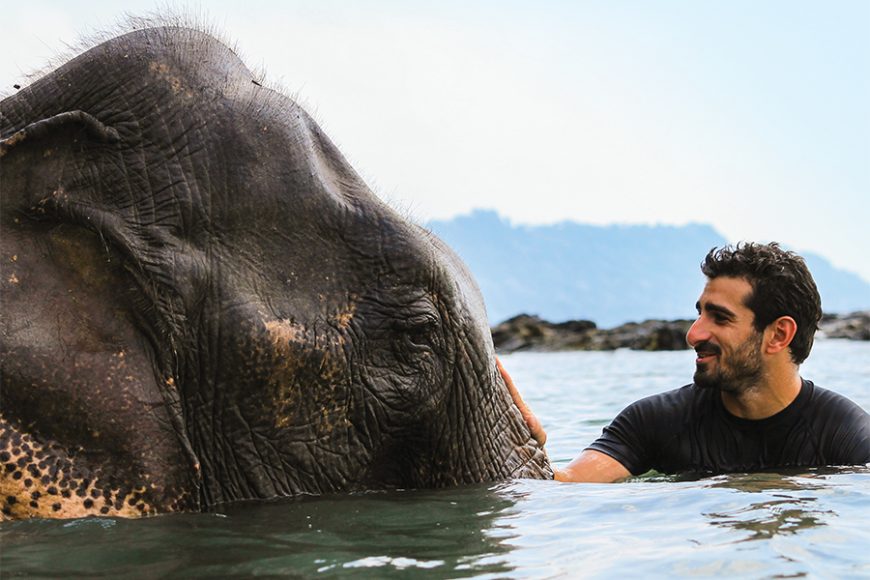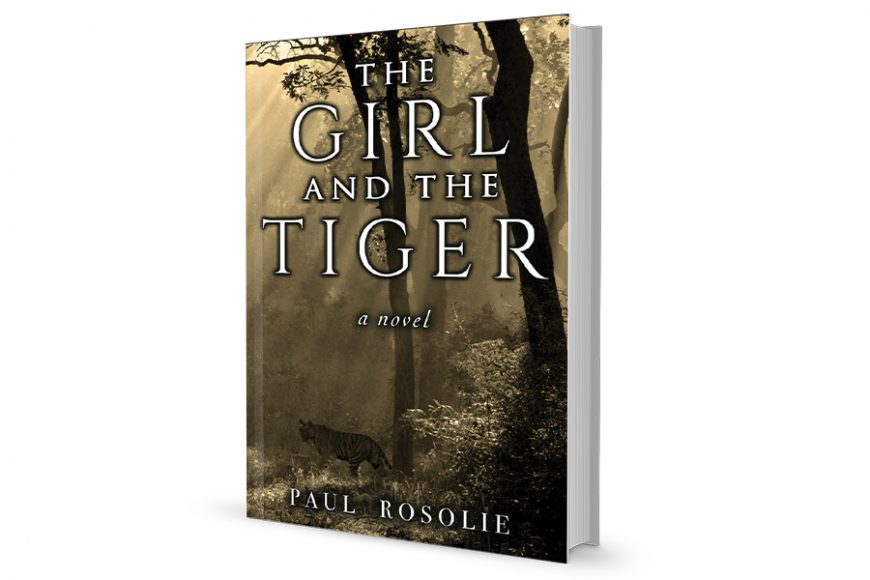Paul Rosolie is a naturalist and conservation activist as well as an award-winning filmmaker.
He’s a novelist too, and what with the beard and the insouciant smile, he could also pass for a hipster Brooklyn bartender. Only don’t judge this Brooklynite by appearance, because long ago this lover of the wild exchanged New York life for the Amazon rainforest and the Indian jungle — although when pressed he still calls New York state home.
The relationship between humans and the natural world was the theme of his first book, “Mother of God,” and his new novel, “The Girl and the Tiger.” Based on 10 years of research, it tells the story of Isha, a young girl in India who rescues a tiger cub and tries desperately to get it to the relatively safe habitat of the jungle. Like most books of its type, it’s the natural world that gives a far better account of itself than do the human beings — a topic that’s sure to come up when Rosolie appears at Southport’s Pequot Library on Dec. 10.
“It’s nature versus nurture,” Rosolie told Los Angeles’ “KTLA Morning News” in an interview back in October. “I came out loving animals and so I had to go to where the animals were.” He wasn’t talking about the Prospect Park Zoo or the Brooklyn Aquarium either.
It was this passion for the natural world that took him first to the Amazonian rainforest. As he told the audience when he was speaking recently on a book tour at the Strand Bookstore in Manhattan, at one point he had been in the Amazon for so long — 13 years — it was only a couple of months earlier, when he was back in the city, that he had taken his first Uber. “I asked the guy, how do I tip you, and the guy was like, he turned around, ‘Where have you been?’”
Rosolie had thought about going to India after the Amazon but only became really enthused when a professor told him about the dwindling Asian elephant population and how close Indian tigers were to extinction. He also quickly realized how Rudyard Kipling’s “Jungle Book,” though written 125 years ago, was still the only popular book we have to date about the Indian jungle.
“The Girl and the Tiger,” he says, is a modern “Jungle Book” with a female lead. “Instead of tigers being the bad guy, this is a modern-day tiger, a refugee tiger. It’s the story of what we have to do now to protect the species — and told from the animal’s perspective.”
Rosolie works with Junglekeepers, an organization that protects 30,000 acres of rainforest, and is now hoping to bring the initiative to India to protect tigers. To put the urgency in perspective, the 100,000 tigers at the start of the last century are down to 3,000 today. With the destruction of their natural habitat, they have been forced to find places to live, hanging around the edge of villages looking for food as they move through the now-
fragmented forests of Asia.
Adventures have come thick and fast to Rosolie and his years researching the book have brought him close to death. He was almost killed — chased by an elephant in South India while he was writing the book — and had a tiger’s tooth scrape across the bone of his finger. All the material is based on true stories. When Isha says, “I am going to protect this tiger and not let people kill it,” she is in fact resonating Rosolie’s own story. The fictional child takes on the saving of a tiger just as he has taken on the saving of tigers and the rainforest. The message is that the possibility, and indeed the obligation, of saving the planet rests with each and every one of us.
It hasn’t gone all his way. A fundraiser in which Rosolie, dressed in a special protective suit and headgear, allowed his head to be swallowed by a 20-foot anaconda, backfired to some extent, with animal rights groups such as PETA suggesting it was no more than a David Copperfield-type stunt. But Rosolie defended it, saying the purpose of the exploit was to draw attention to the plight of species endangered by the disappearance of the forest. To get people really excited about the rainforest, as Rosolie rightly points out, they have to at least know what it is and what’s going on there. “We’ve been trying to protect the rainforests for decades now and we wanted to do something that would really shock people, something that would really get people to sit up and pay attention.”
The Amazon, moreover, provides a fifth of our planet’s oxygen, he emphasizes, so the ecosystem is a crucial one.
On his website, he says about “The Girl and the Tiger”: “It is a necklace of a book, a series of seeds and teeth, stones and bones, gathered from the forest floor; I only added the string.”
If Rosolie himself comes across as occasionally simplistic in person — with a certain glibness when being interviewed, for instance — his fiction is anything but. His is a layered prose, straightforward and accessible, certainly, but also subtle, mannered and nuanced. And while “The Girl and the Tiger” is a children’s story for adults, the relationships it explores — both animal and human — are complex. What he has ultimately achieved is to bring home to readers — through an accessible work of fiction — is how the Indian jungle, and much of the living environment on this planet, is in a state of emergency.
That’s a rare accomplishment for any writer, and rarer still for a conservation activist.
Paul Rosolie will be appearing at 7 p.m. Dec. 10 at the Pequot Library at 720 Pequot Ave. in Southport. For more, visit paulrosolie.com.






